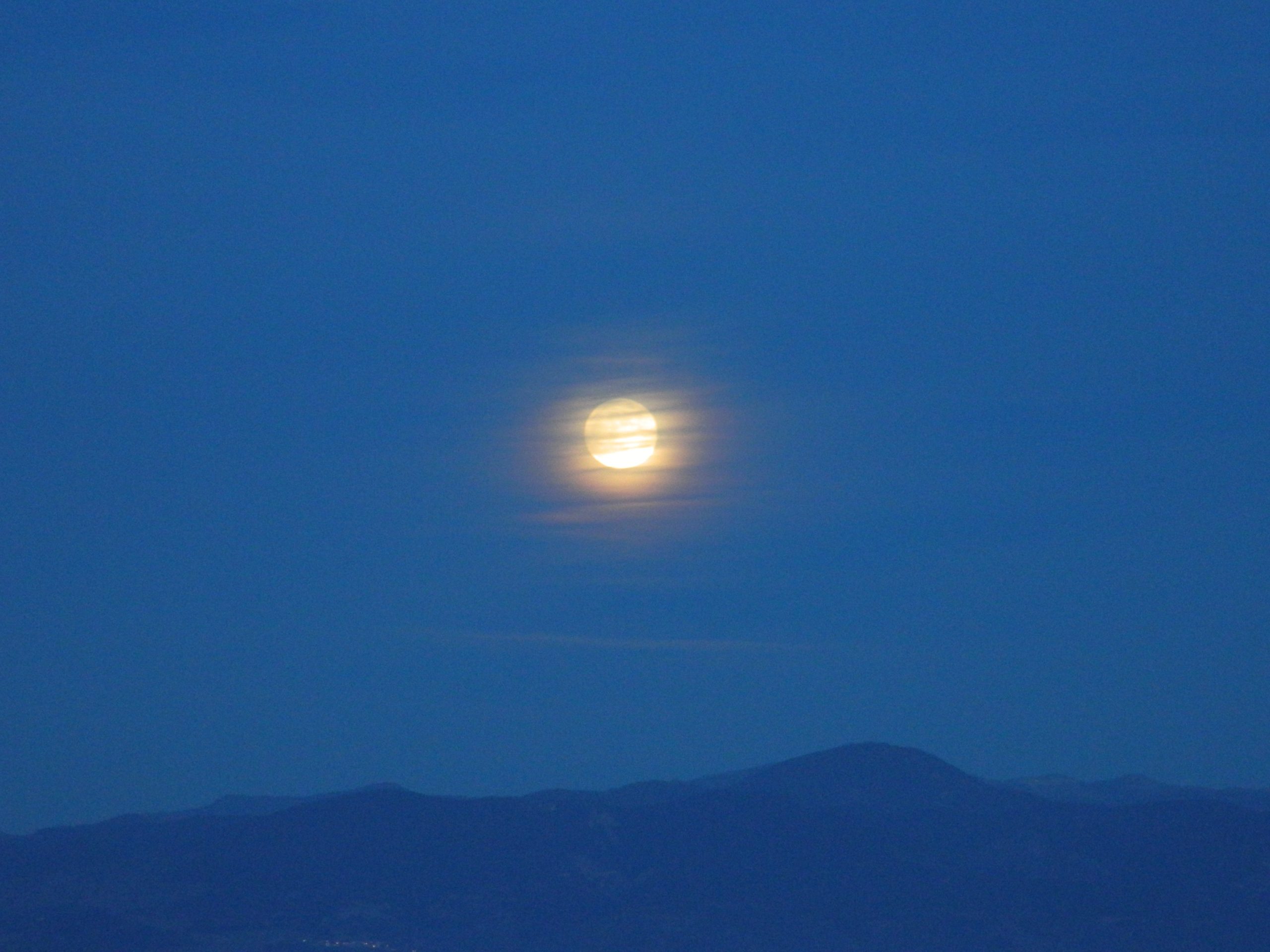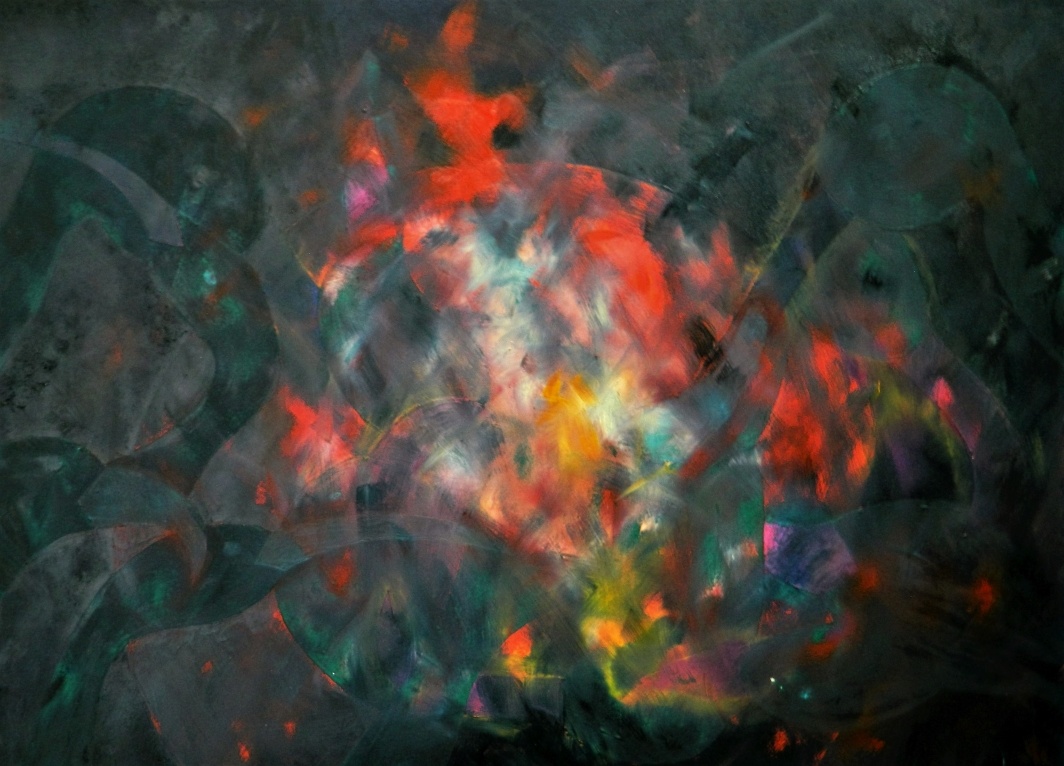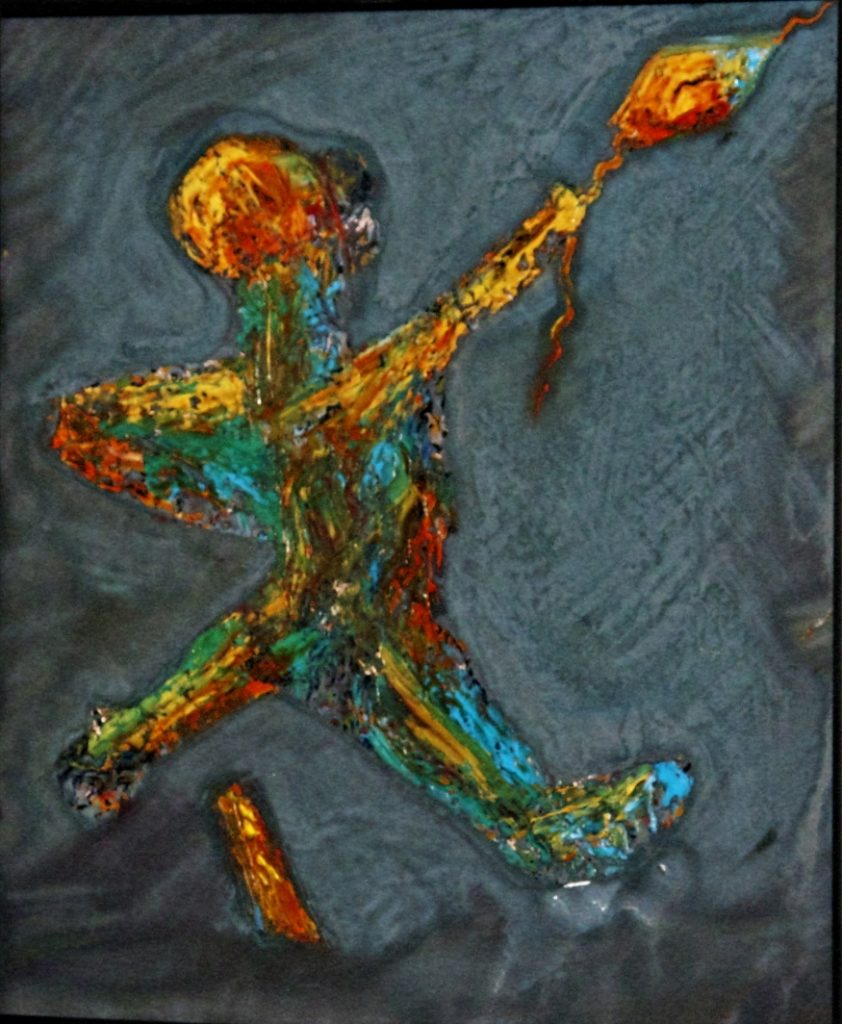
Experiencing the life for more than sixty years; painting generally provides me with another dimension, like giving a different world to a twelve-year-old boy; since it makes me free to get the inner child out. It gives me a different world where art is a precious opportunity to touch other people’s lives through a time tunnel, without knowing who they are or vice versa. Art has energy, generated from its motions/dynamism, means and ends within harmony, sourced by Nature, and transmission of this energy from its storage may create an effect of a newborn existence, pregnant to a more opening for the good. The purpose of all these efforts given is to make a positive contribution to the vitality of all; by taking the “Constructive Freedom” as a base… When you look at the Art from this concept, then the theme of your work can become whatever it will be.
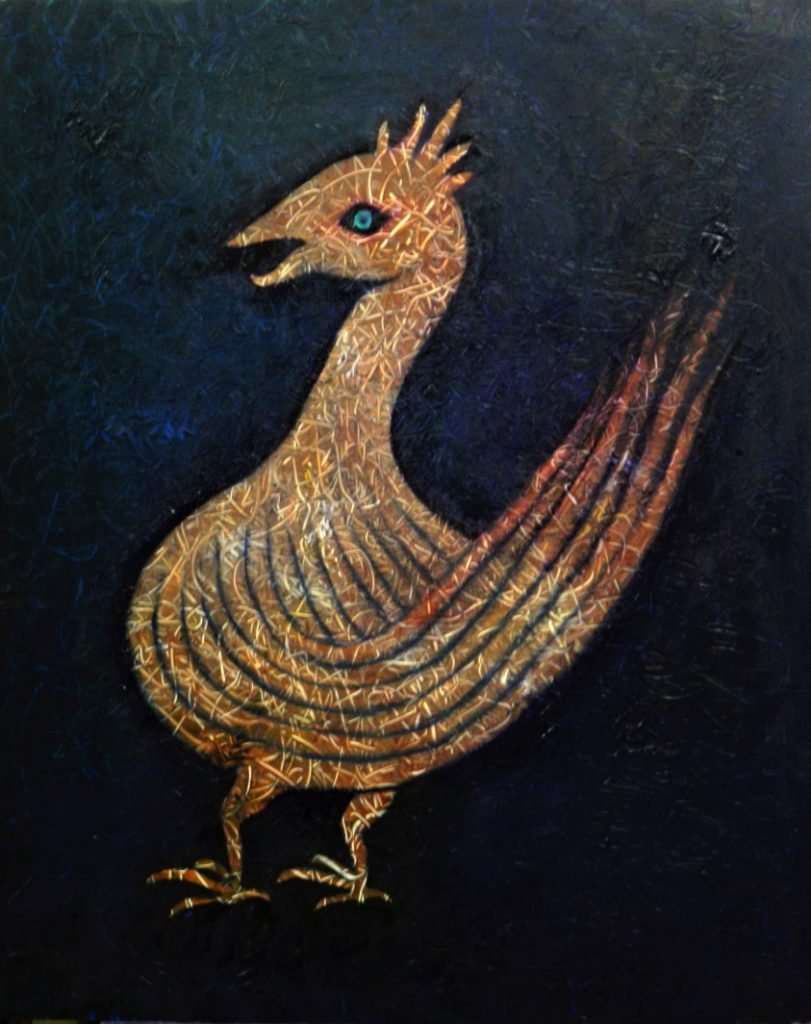
It may be either a “Shimurg” ,
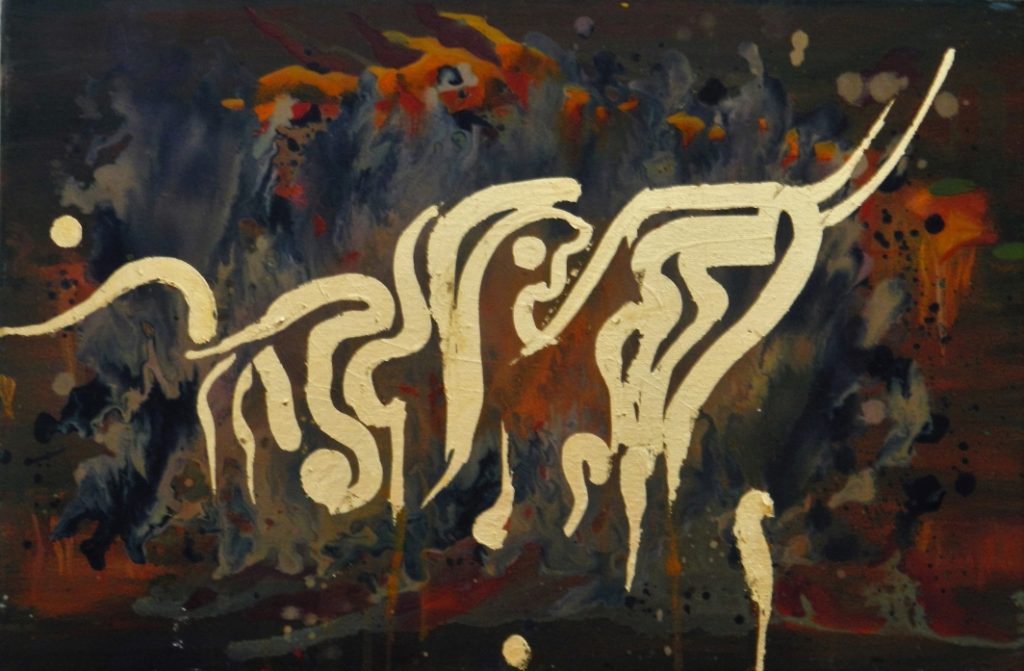
or “Golden Fleece” within a mythical story;
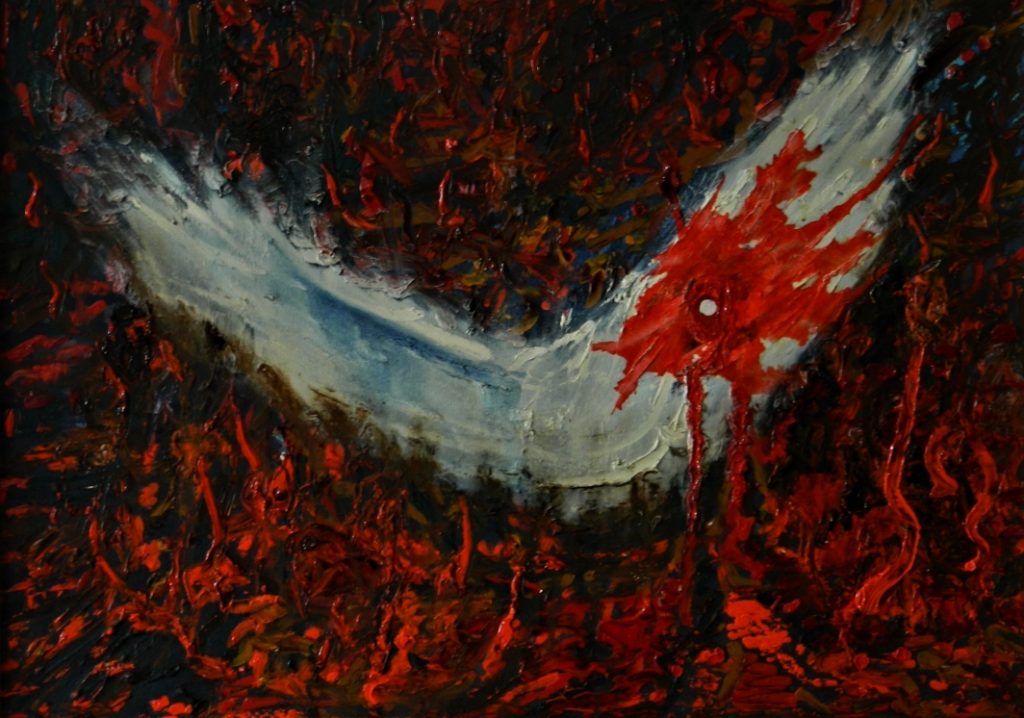
or a “wounded peace” on the wing of a pigeon;
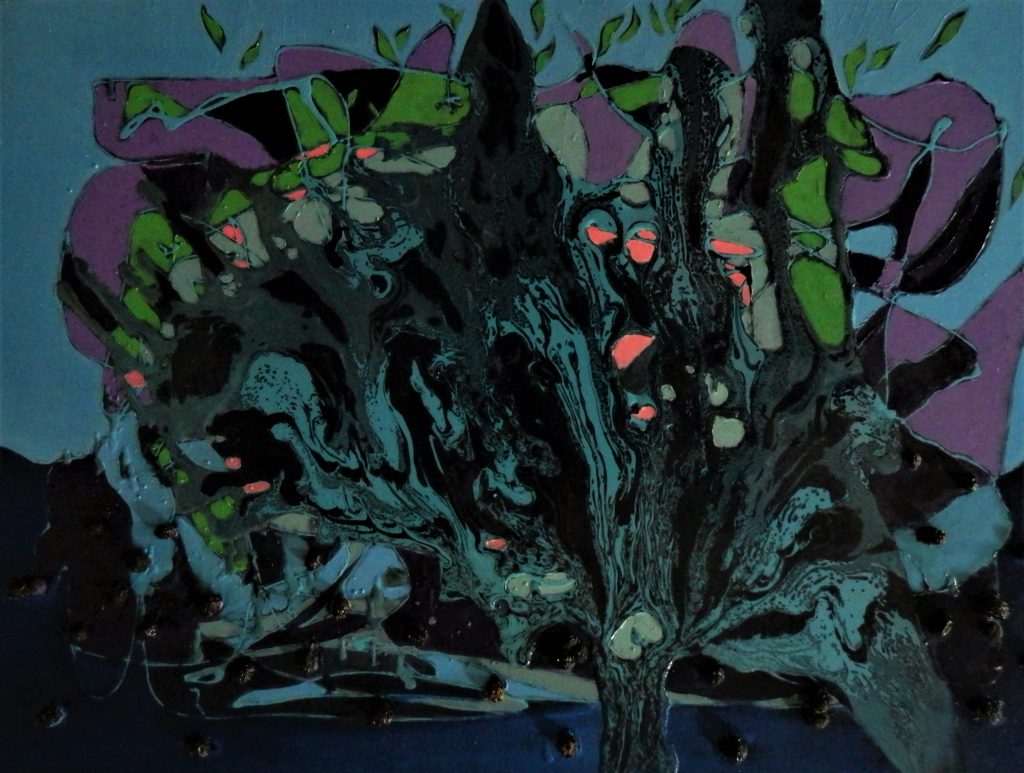
a hope on the leaves of an “immortal olive tree” on a sunny spring day;
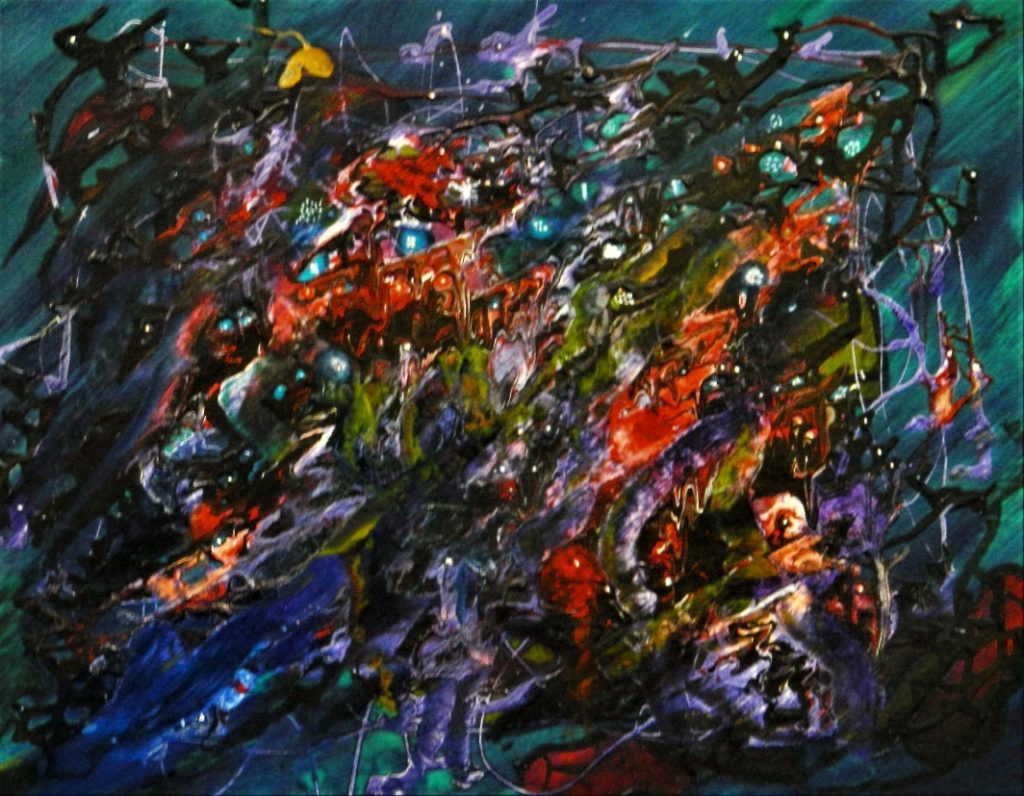
or a “homo homini lupus” way of wars on a starry winter night…
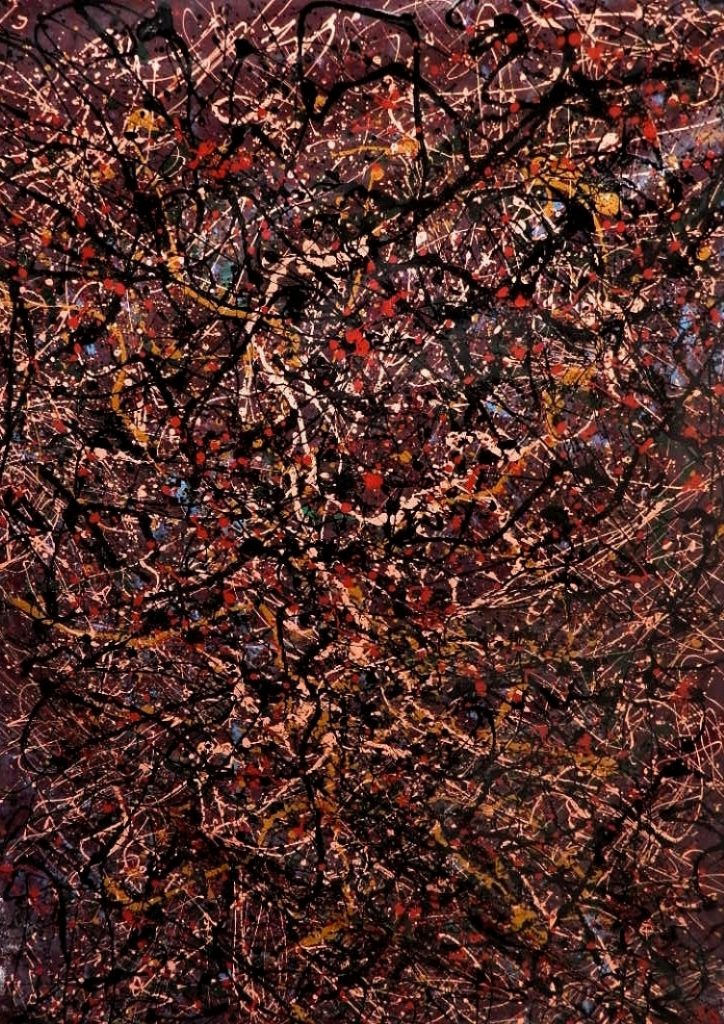
Then there will be a number of themes for one work (mostly dynamic) which only come up with the imagination/impression of audiences/individuals – or exist in abstraction itself- depending upon how they communicate with the work if they wish to, or the other way around … To this approach, there are neither limits nor a certain path to describe; rather it is more like walking on an adventurous track where no one has walked before. For the “Constructive Freedom” part, it is not important where, but rather how, you walk. To focus on the Lotus or to the swamp will be your conscious choice which establishes the overall preference.
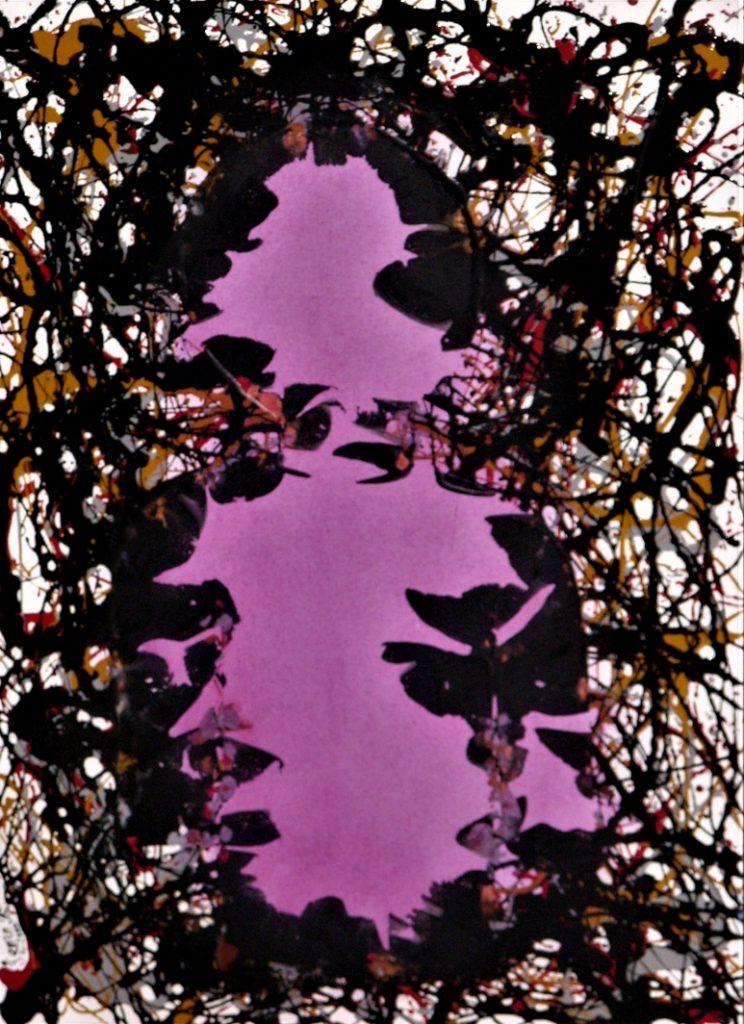
In practice, the realization of this usually happens in a limitless acceptance of letting go via pigments/art materials. It is a kind of experimentation, sometimes painful but mainly joyful. This approach is not repetitious by nature and may be called in general: “experimentation within intuition” or “art experimentation within quantum”. Not being a psychic, if you do have some extra-sensory perceptions (ESP); such as inner voice communication; ability to differentiate and read messages from higher sources when they occur; the theta waves at the brain and so forth; and having the perceptions on some pillars of a paradigm (love, respect and tolerance) then the rest can be considered as fulfilling the creation process via your nature.
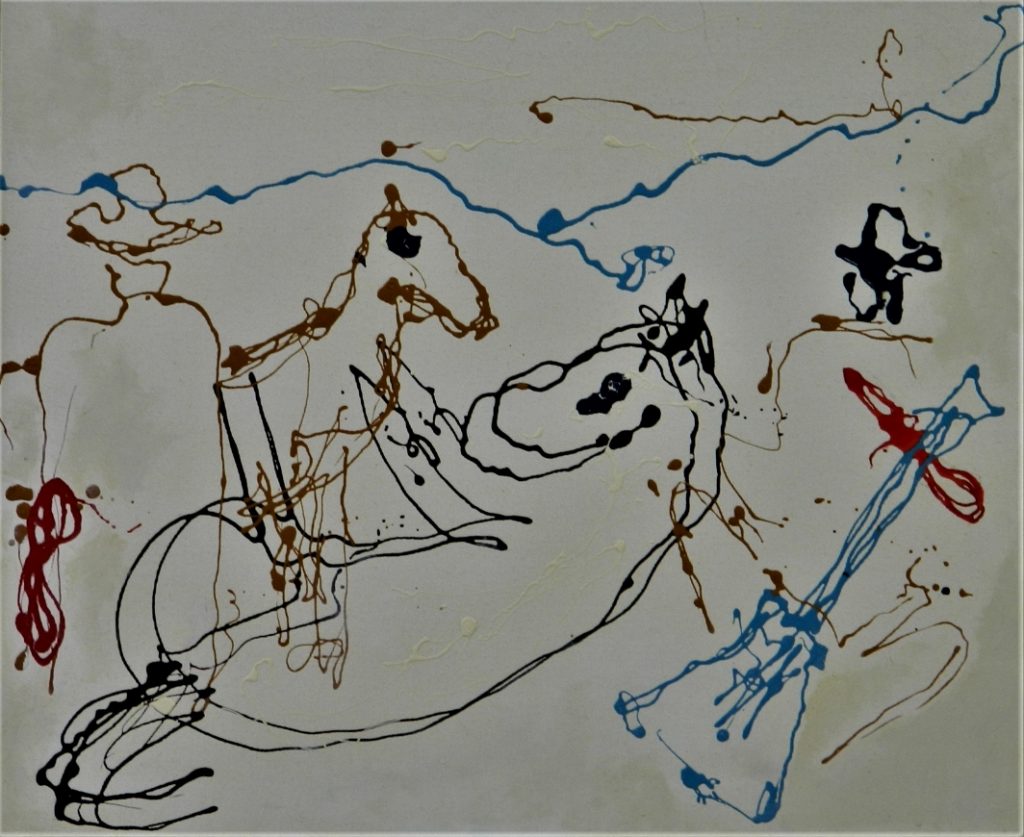
For instance; seeing a South American ceremony for a dying horse and hearing the accompanying music on TV may cause the creation of “The tune for the Dying Horse” by triggering emotions.
The mastery of techniques for work is essential for reflecting the above to the meaning. I feel deep respect for those who can do this. By supporting/affecting each other, the process and the techniques are both parts of the holistic approach to creation. As it is well-known, the work itself educates!
Think about an author whose life ironically was reflected in his novel and/or his novel became his destiny (Zweig? Kafka?). In the case of painting, you are working on it without having a theme or a specific message to convey, even not knowing where it will be headed; your mood, your feelings, thoughts, your soul and even your karma come back to the work with an unavoidable end. The whole is interlinked in a multi-layered and flexible way.
Now, let me be more specific about the act:
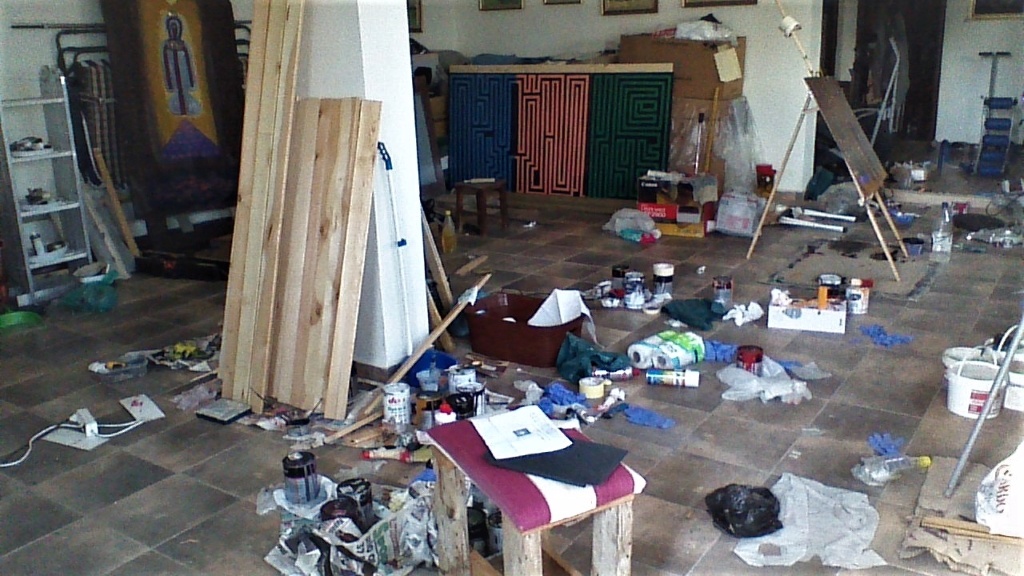
– Articulation: Until the time comes, I articulate ideas, info, materials (that attract the attention) and energy without knowing how to use them.
– Arrangement: Before starting work, I arrange the articulated materials and select a surface material, tubes/boxes of colours, whatever pulls the inner attention…
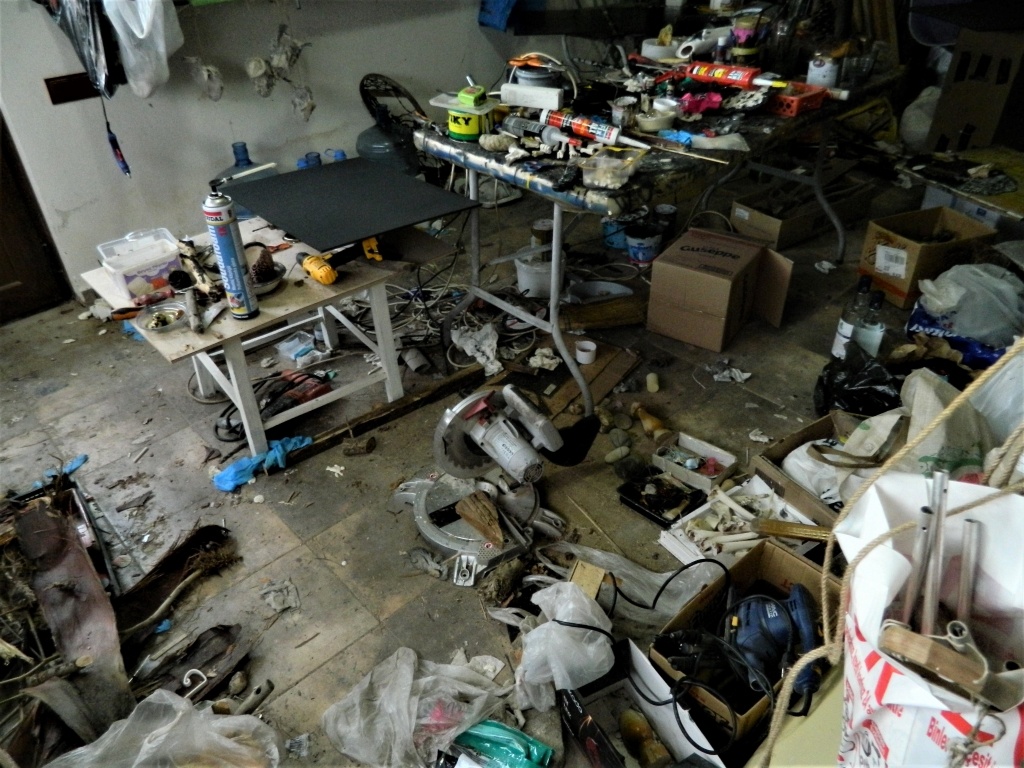
– Start to work: Not always, but mostly, the inner voice starts communication, even sometimes for the colours if the channel/channels are open… For instance, if you are dripping, it says drip it from left to right! Sponge it! Now take the canvas to the upright position allow them to flow! etc.… Now use bright red, light grey and so on…This process goes on and on until it is finished. Perhaps finishing/completion is as important as the creation process if not more important.
Every work has its own path and there is not a ready recipe or a fixed sequence of order for all. Please allow me to go back to the days when my painting journey began. After three classical studies (nature-mort), I had given abstract work a try. When I took it to the atelier, Hizir told me: “Pick the colours to a palette as you wish; pick up a brush and strike as it comes.
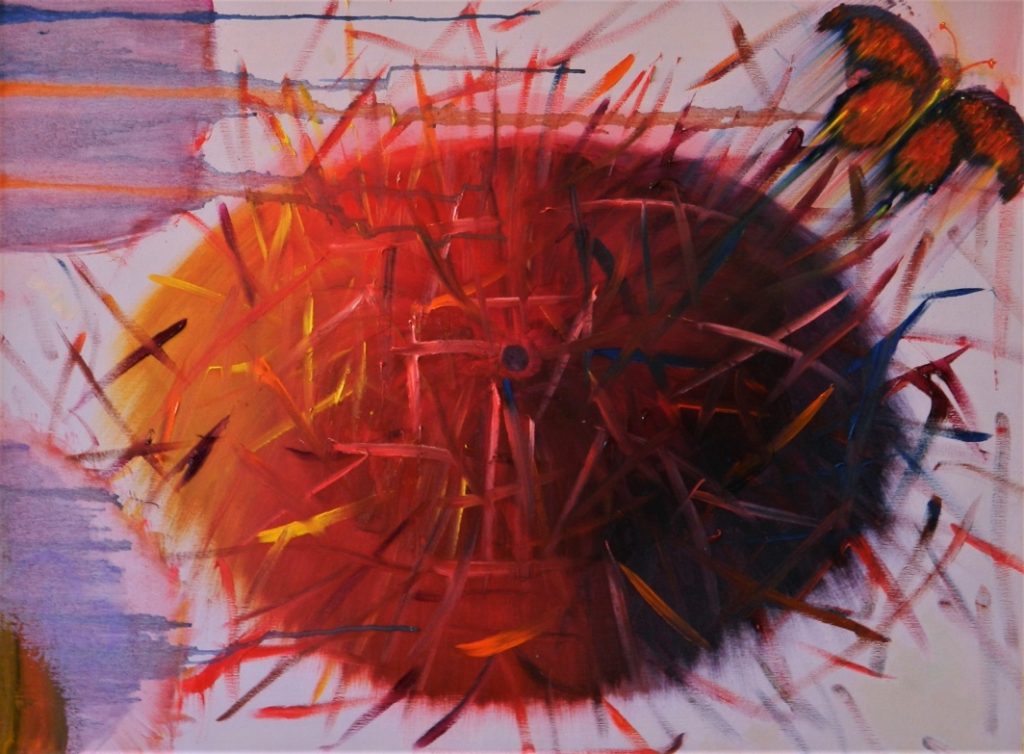
When I took it to the atelier, Hizir told me: “Pick the colours to a palette as you wish; pick up a brush and strike as it comes.At a certain point I had the feeling that I was told by the work, “I am finished, do not strike anymore”. I talked to myself inside by saying “You will not tell me what to do but I will do what I would like to do!” and hit it once more with a bright yellow. When Hizir came back, he told me, “In general, this is good, except this excessive stroke” and pointed out the last stroke (La Petite Mort- Orgasm)
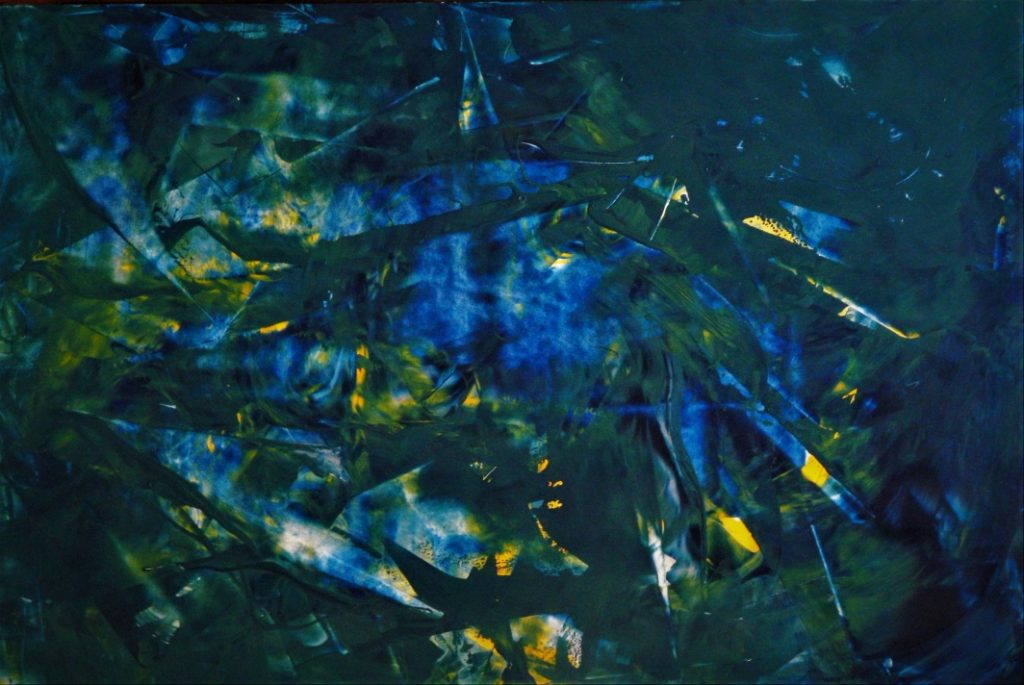
I kept this as a reminder to stop when finished- to not even put a small dot- which may spoil the entire work. Sometimes, as soon as I start and after a couple of actions, I am told it is finished. Based on the lessons learned, I stop there (The Goose Mountains’ Symphony).
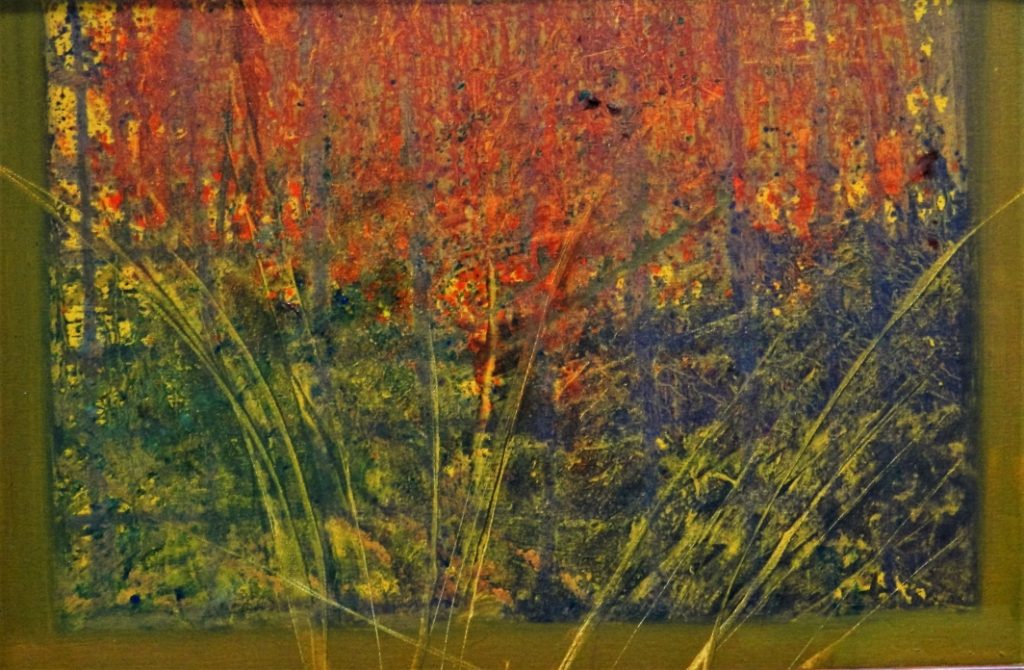
To use the time effectively, I was painting at home and then would take the work to Hizir Teppeev’s atelier by taxi. Once, the work was wet, and when I took it out of the bag I realized that the painting was scratched. With the confidence of an expert, he said: “Let us have a look at it. Can we do something about it?” He picked up a spatula and deepened the scratches. This is the point where I learned that the works have their own paths and crises/disadvantages can be turned into advantages in an appropriate way.
The other key point is tracking/chasing the progress in terms of balance, harmony, colour reactions, emptiness-fullness and eyes/brain entrance into the work and free travel in and around it. From time to time while working, in fact as often as possible, I take a step back and check it, listen and continue.
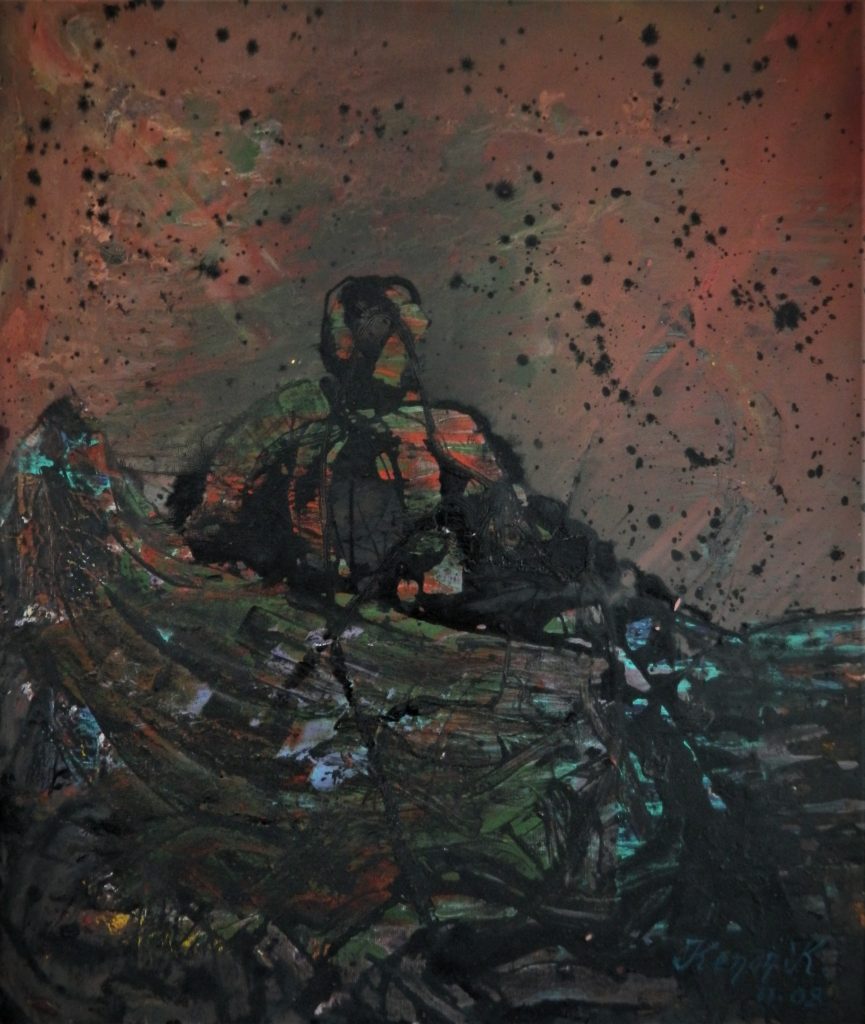
I would like to take this opportunity to extend my gratitude to Hizir for the techniques he taught me for two years and especially for not interfering with the sub-conscious. (I am not sure that it was intentional?)
Hizir Teppeev was my first and only teacher in art, and sadly lost him on 03 May 2016.

Overall, I feel that the works all carry on some parts and pieces of myself and I realize that I start every work with a fresh soul which gives me the sense that I am painting for the “first time”.
My ultimate wish is to be able to express my feelings and thoughts, by transmitting the energy experienced, and to share the stored vibration of the works with many people to the widest extent possible… Kenan K.
